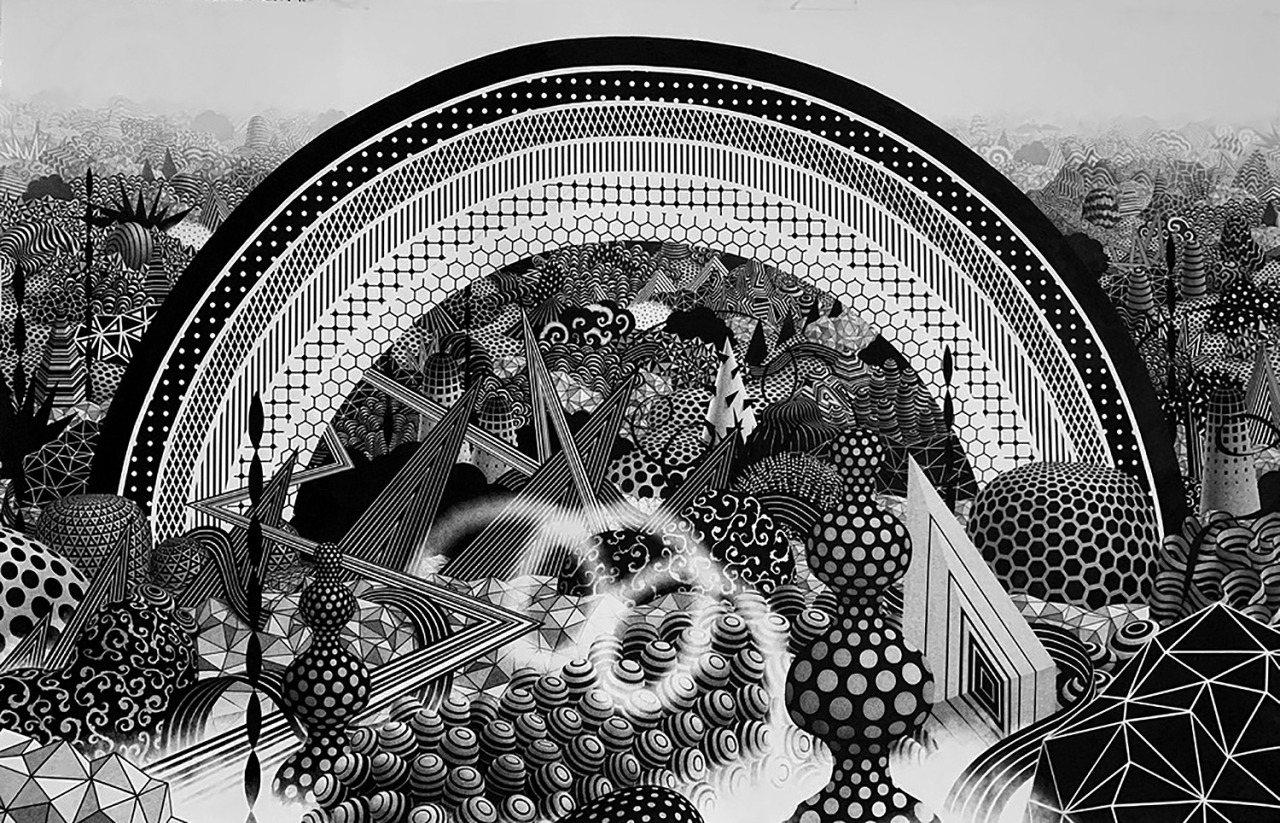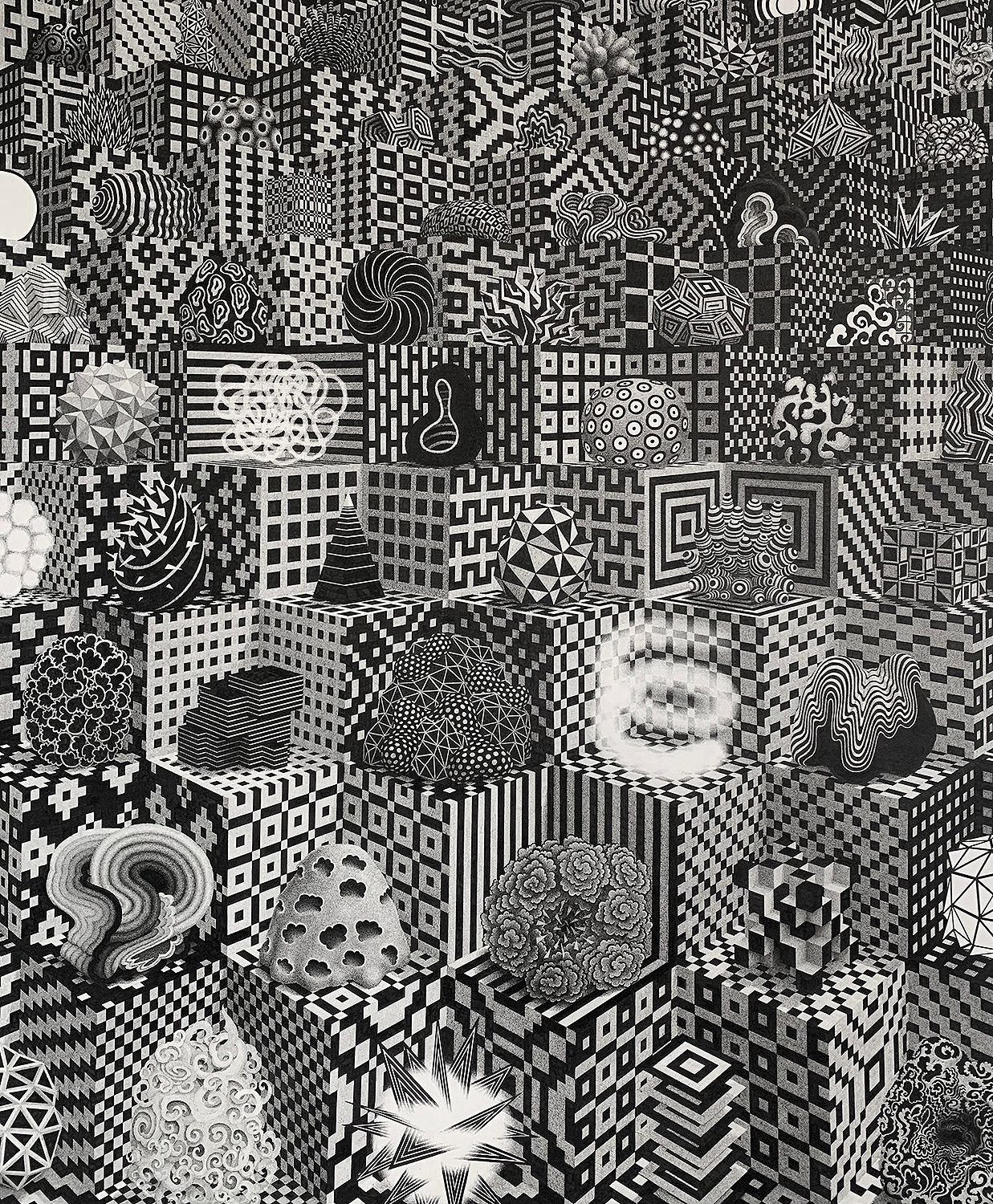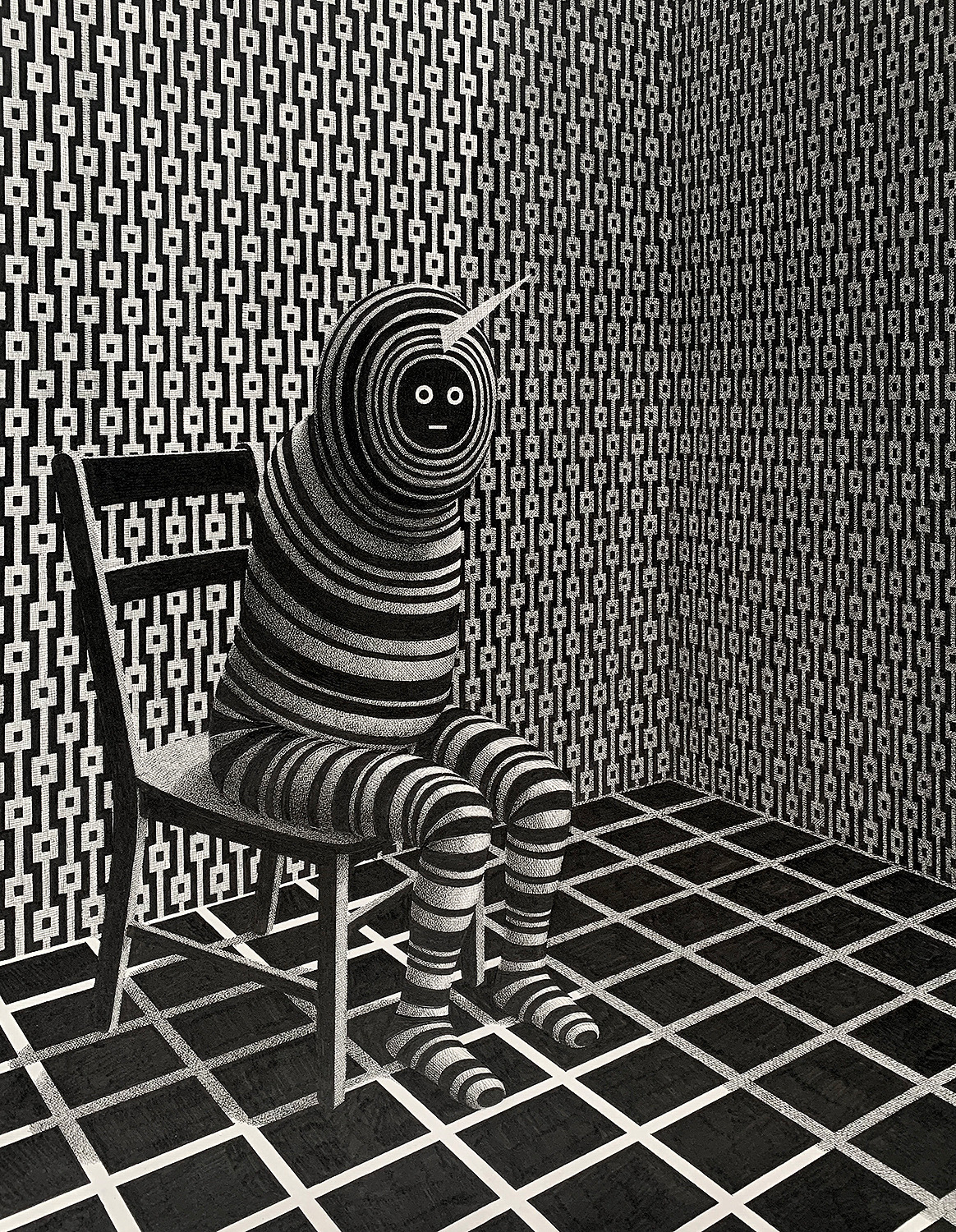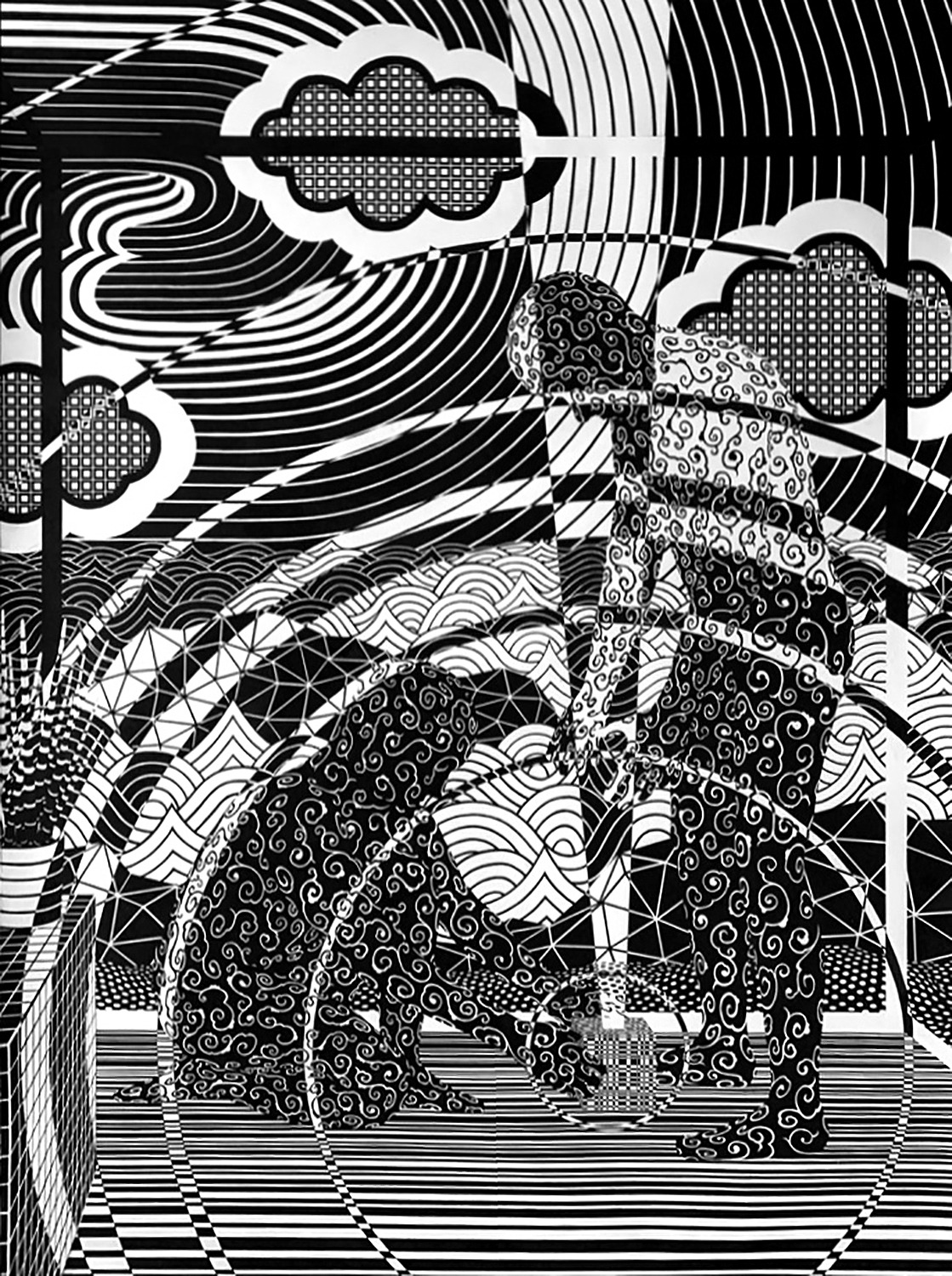SUPERSONIC ART: Ben Tolman’s “Unmode.”

Currently on view at Thinkspace Projects in Los Angeles, California is artist Ben Tolman’s solo exhibition, “Unmode.”
Originally from Washington, DC, Ben Tolman now resides in Pittsburgh, Pennsylvania. For the past decade he has become known for his carefully detailed, architecture based drawings often pointing to social issues. With this exhibition Tolman has turned his focus inward to examine his creative process directly:
“I have been in the mood recently to examine and alter some of my habits. To me, culture is made by communities, and it is not a competition but a collaboration. I am pleased if someone can use or develop upon the things I have created. For this purpose, I have released the copyright to all works in this show to the public domain. You may do with them as you please, high resolution images are available. All purchased works come with their complementary digital mirror, an ERC-721 NFT. The artist’s proceeds from this exhibition will go towards establishing a decentralized art center in a former Catholic school in Pittsburgh, Pennsylvania.
With this project I wanted to look carefully at the nature of creativity and how it works. I found that the idea of complexity is closely related to creativity. Complexity can be described as a process by which two or more preexisting things are combined to create something new that could not have been previously predicted from the starting point. Creativity can be described the same way with the added element of intent or preference.
The most creative force I can think of is nature itself. The Universe is a complexity machine. The Universe started out with nothing but hydrogen which eventually formed into all the elements, and then more complex molecules, then single celled organisms. Of course, finally, leading to all the insane diversity of life today including us and the things we create. With this project I wanted to create art that would slowly grow in complexity over time in a poetically similar manner.
So I needed a simple starting point. I chose contrasting black and white patterns with basic two-dimensional geometric shapes. I made hundreds of small drawings combining these simple elements, selecting the ones I prefer, and recombining these without knowing where the work was headed. All of the drawings in this show have come out of this process.”














